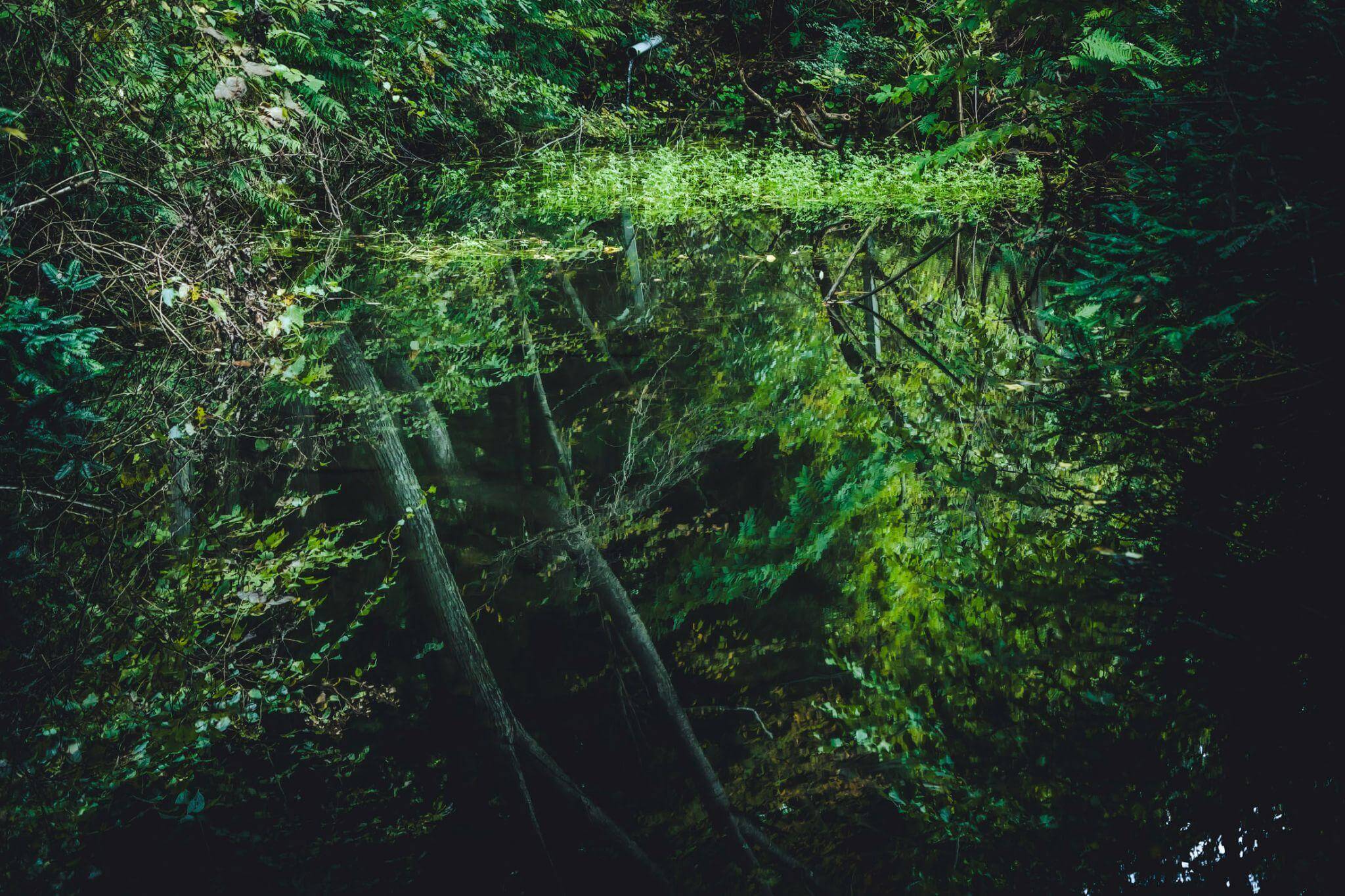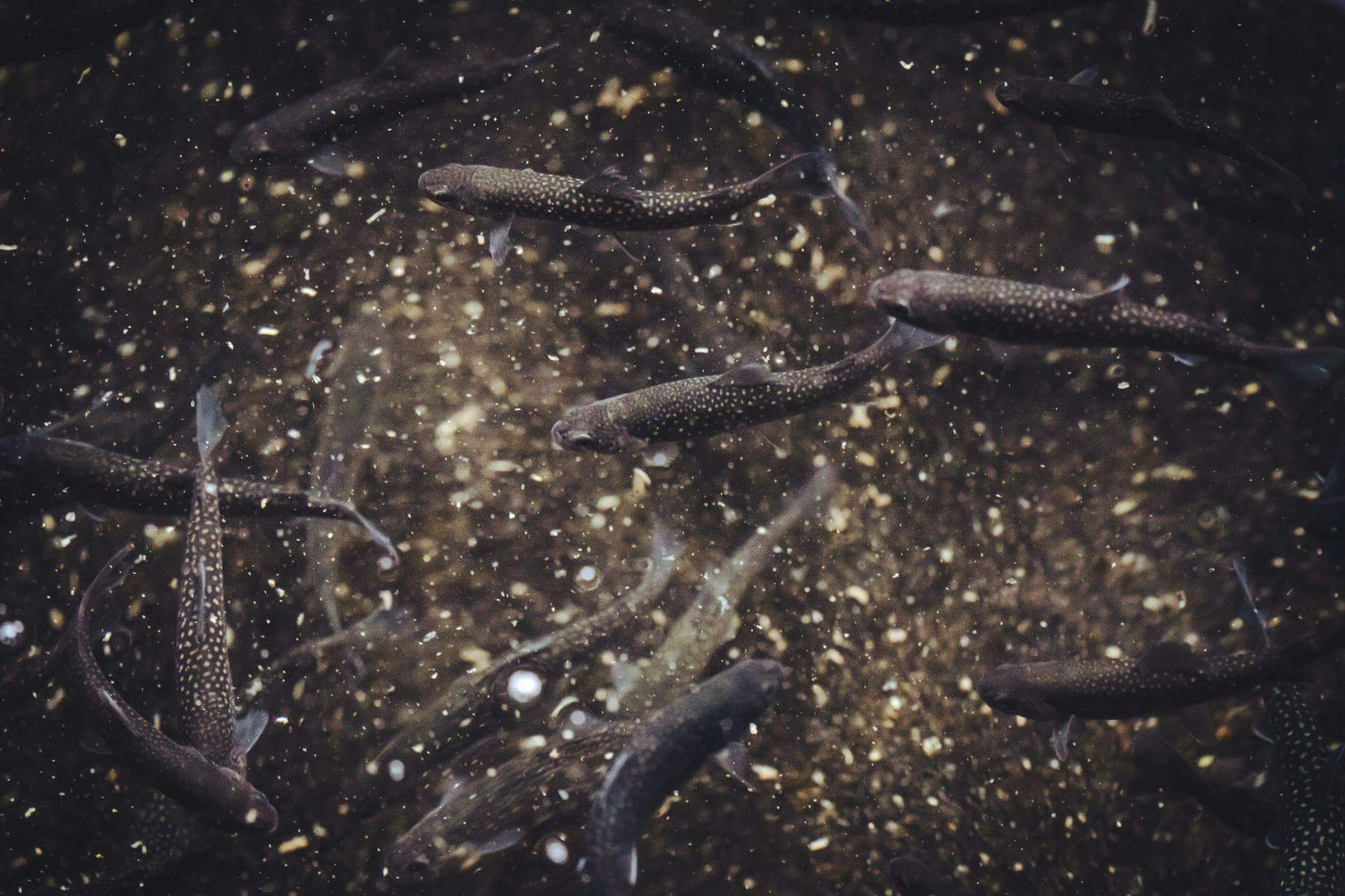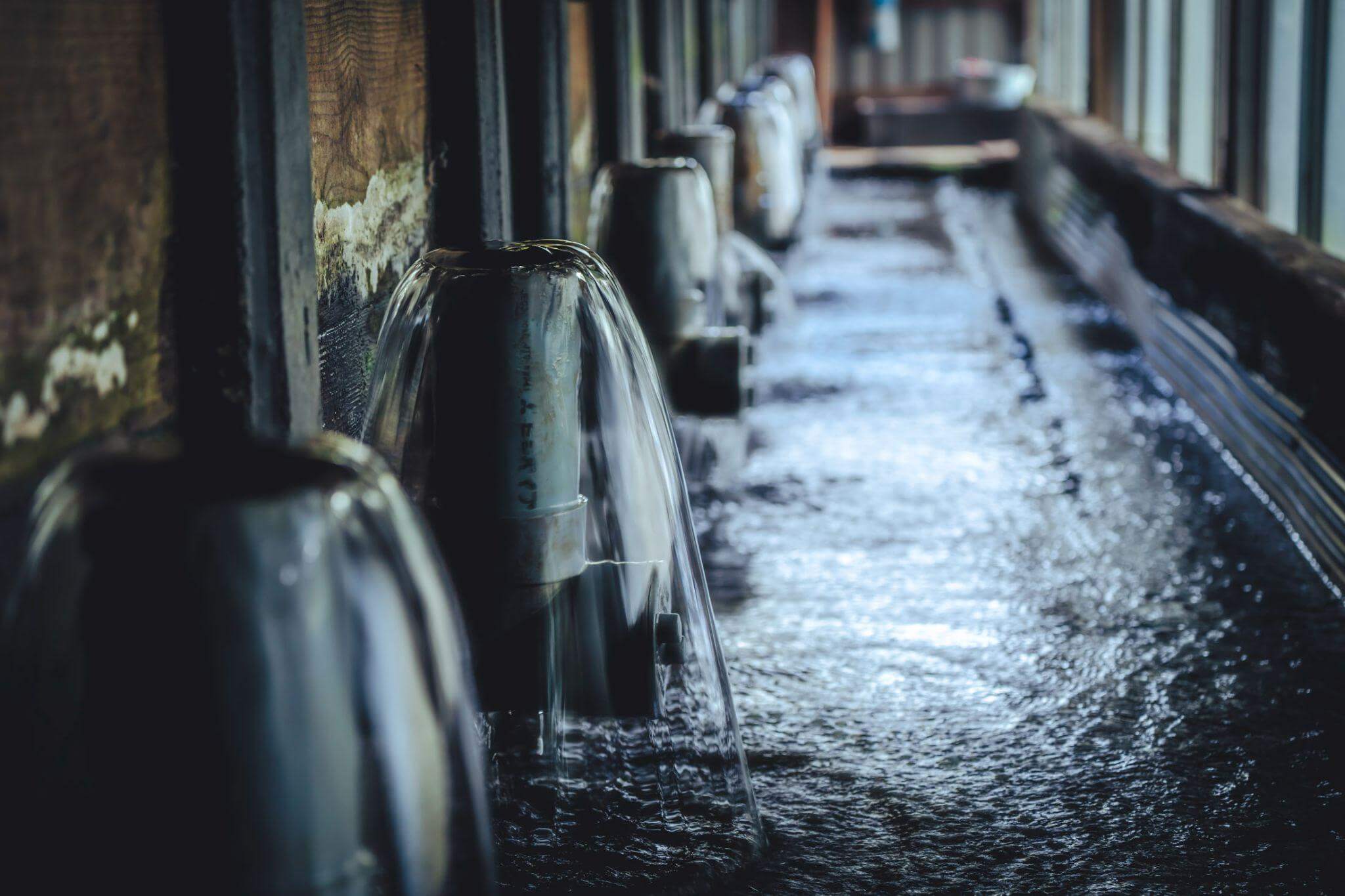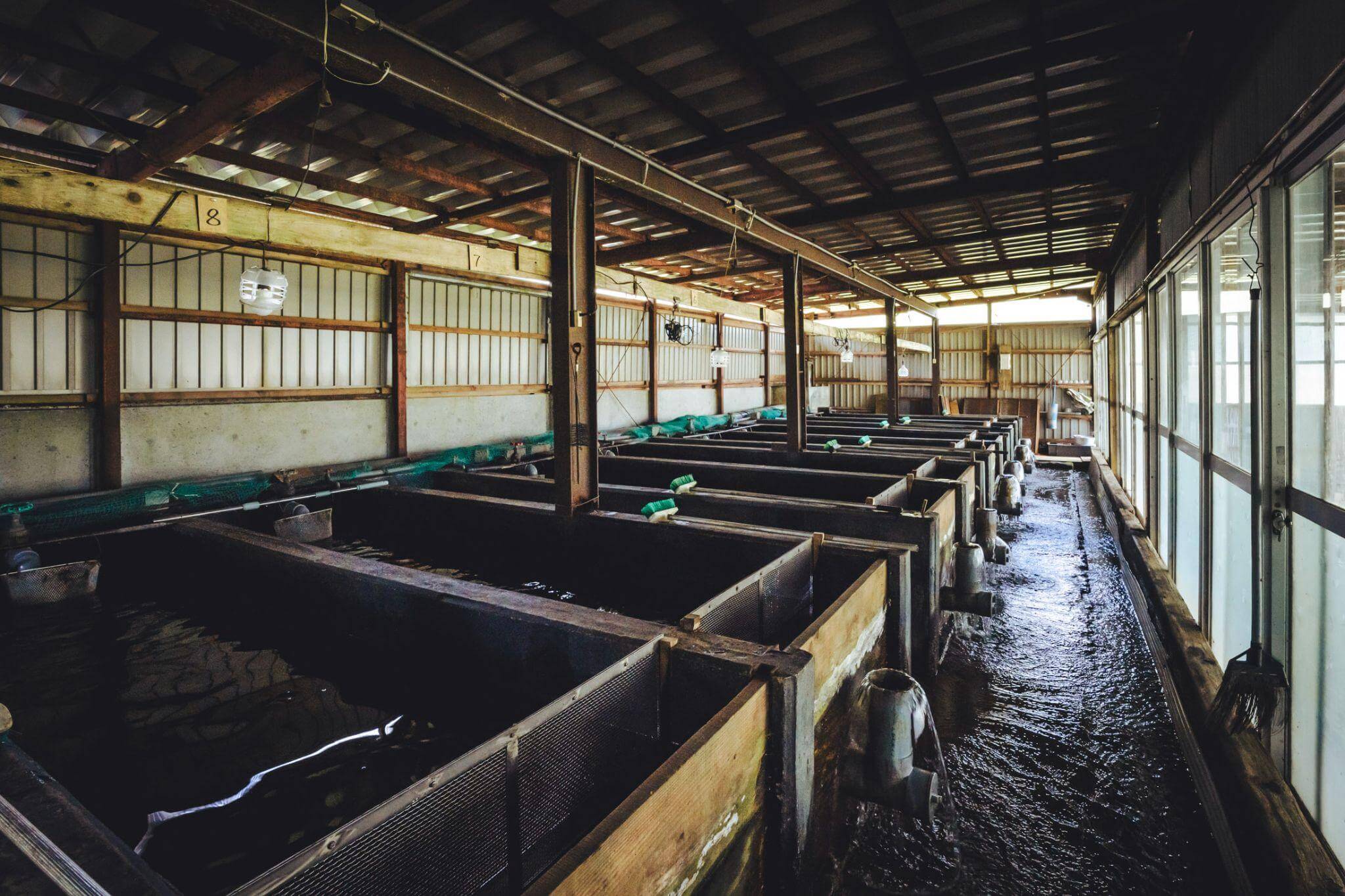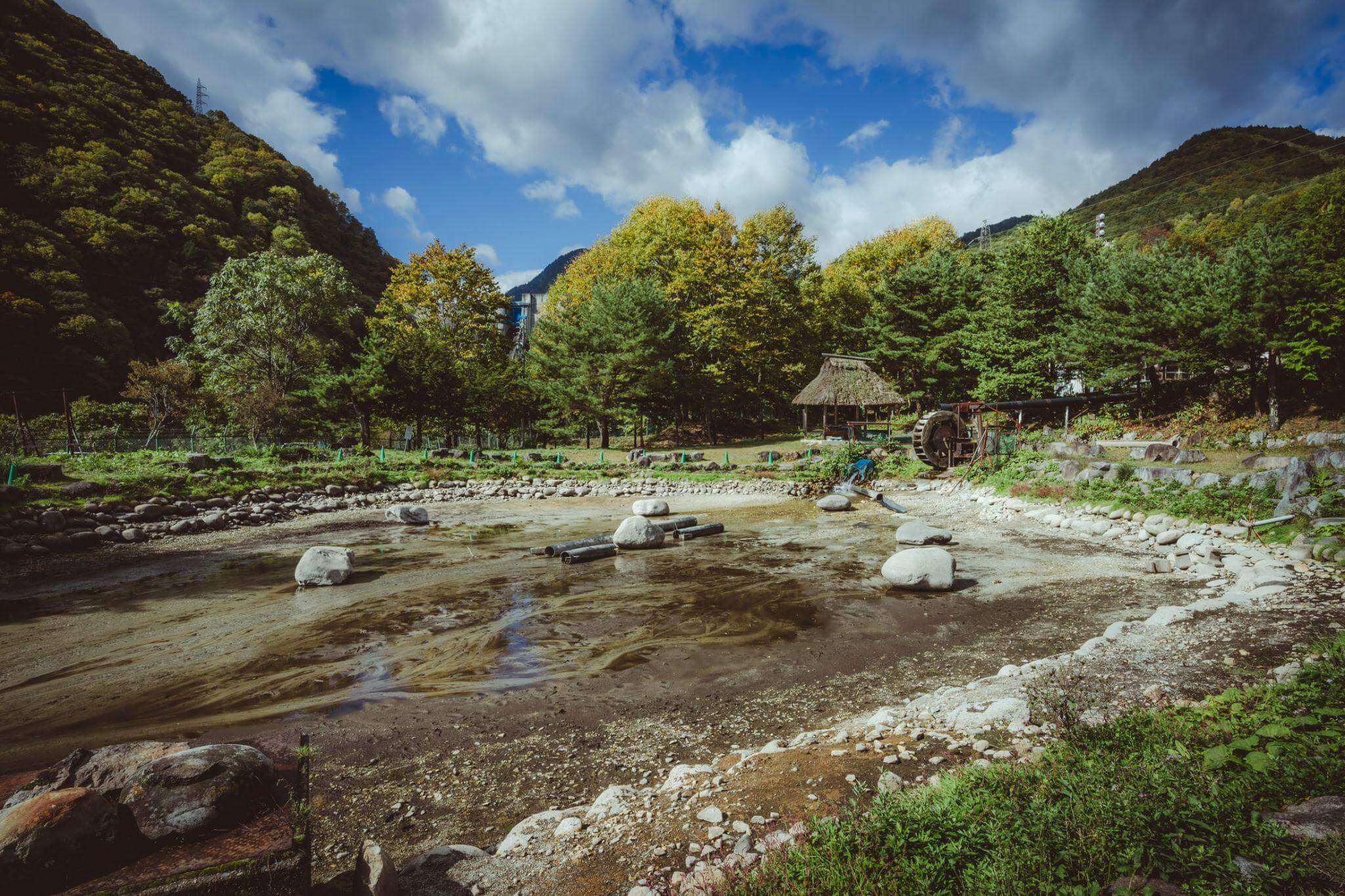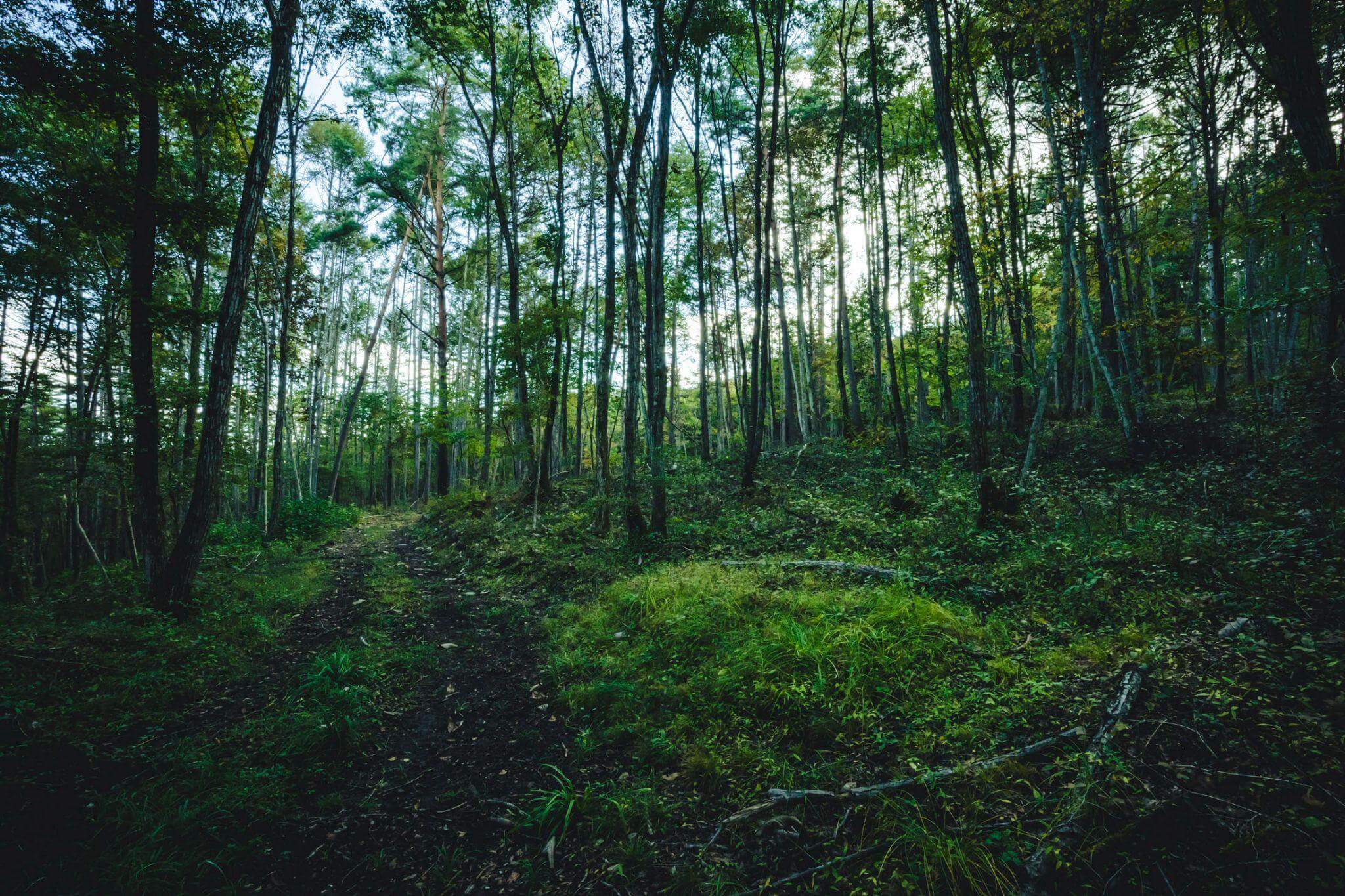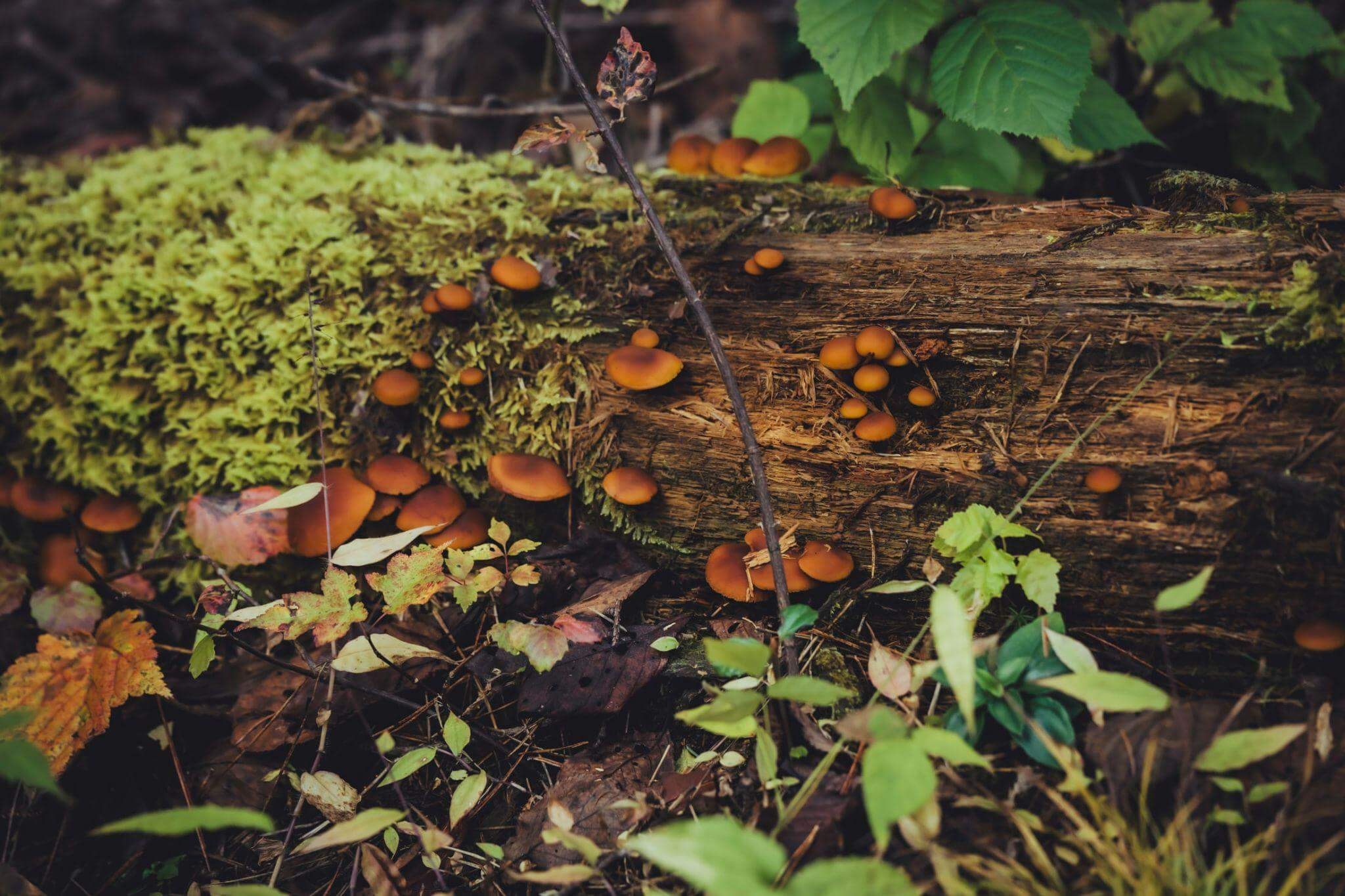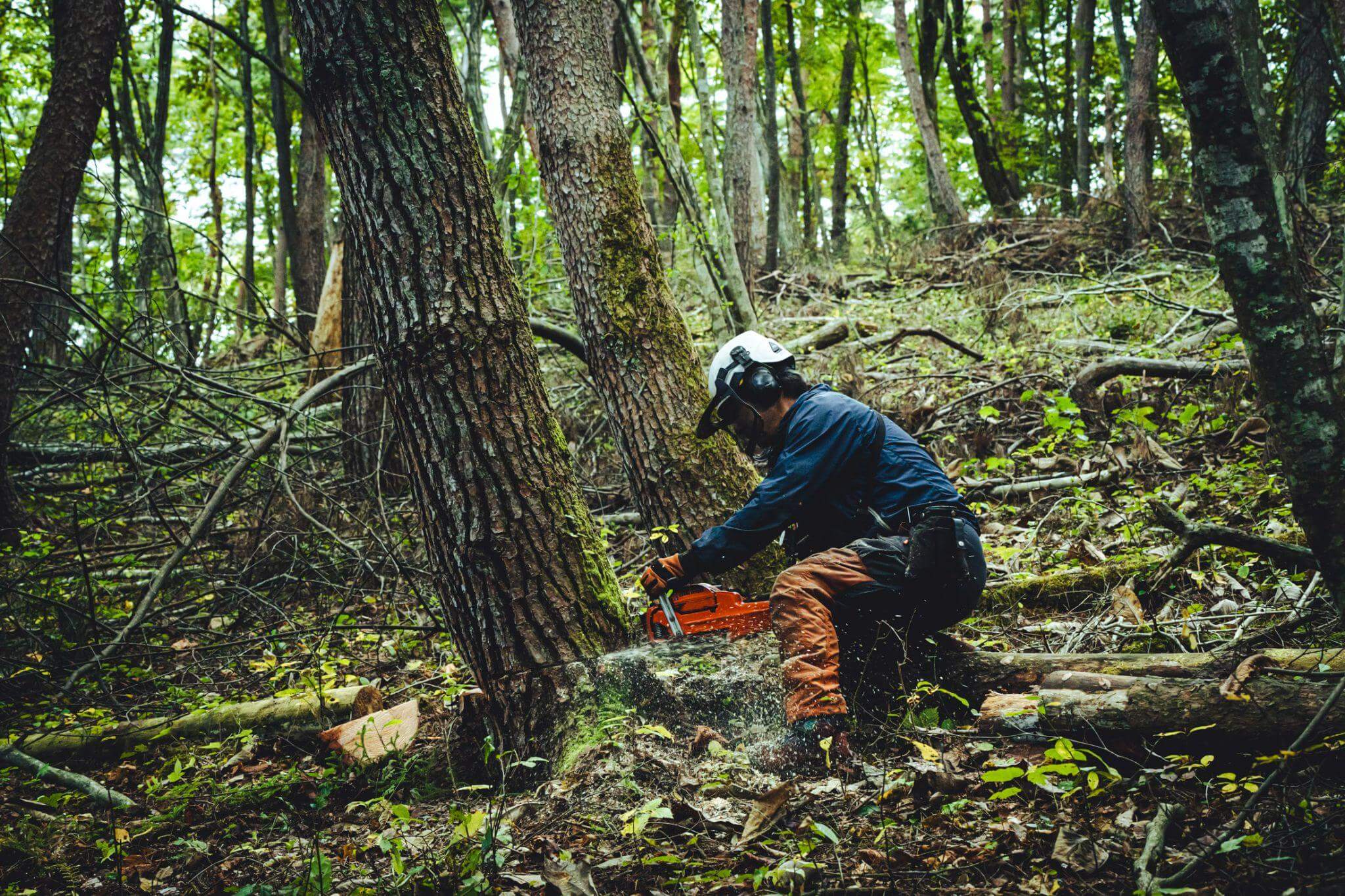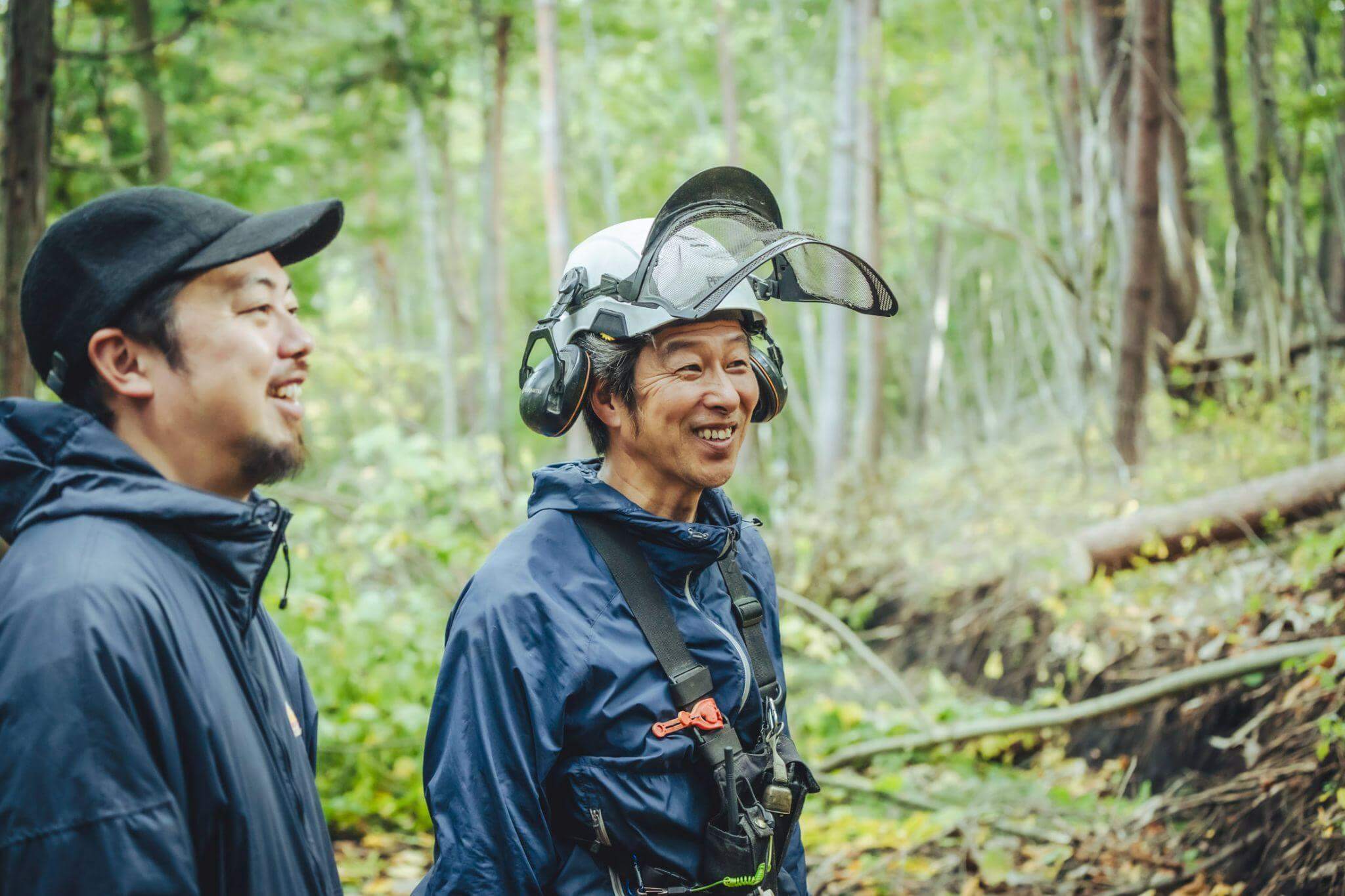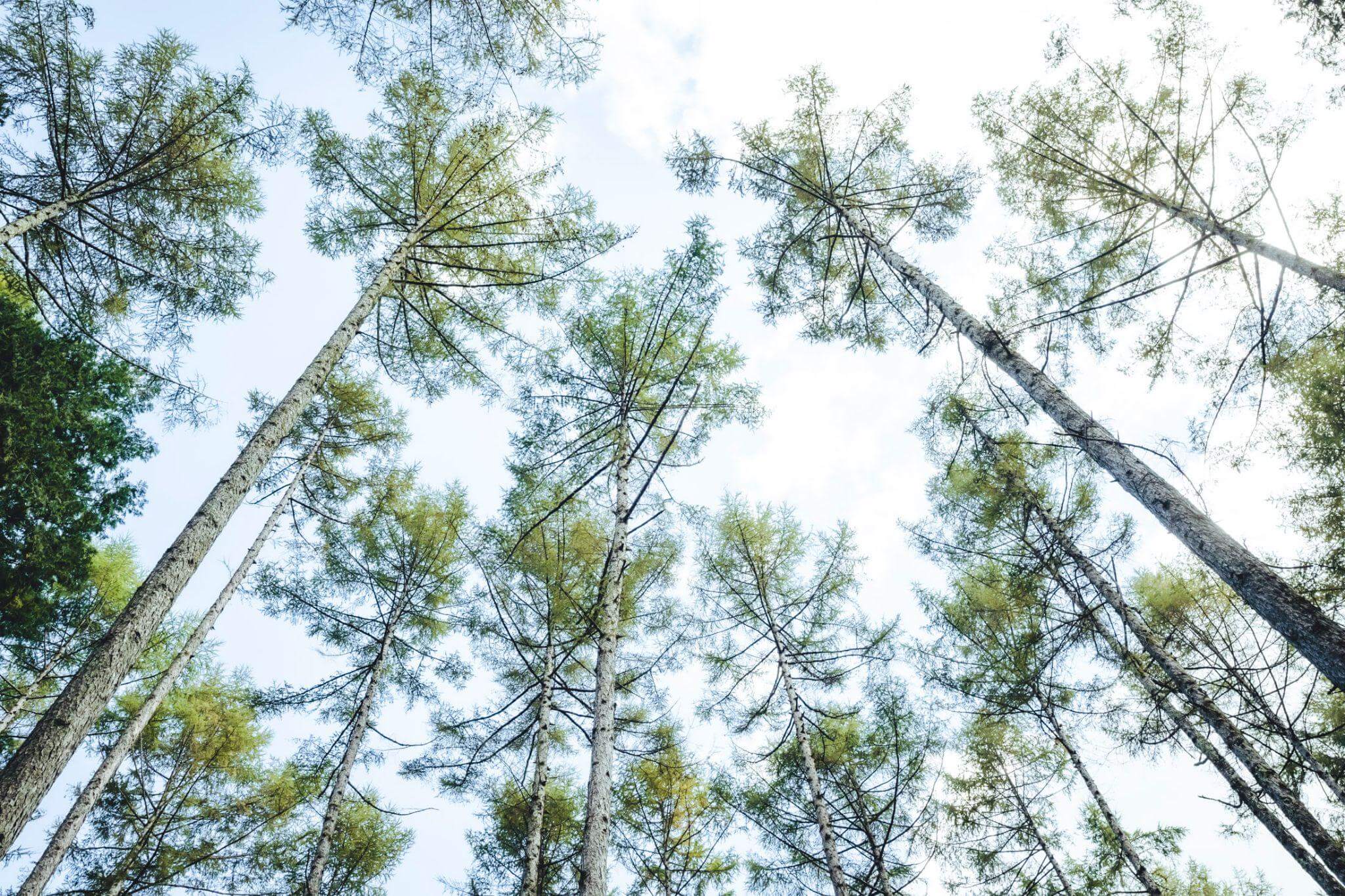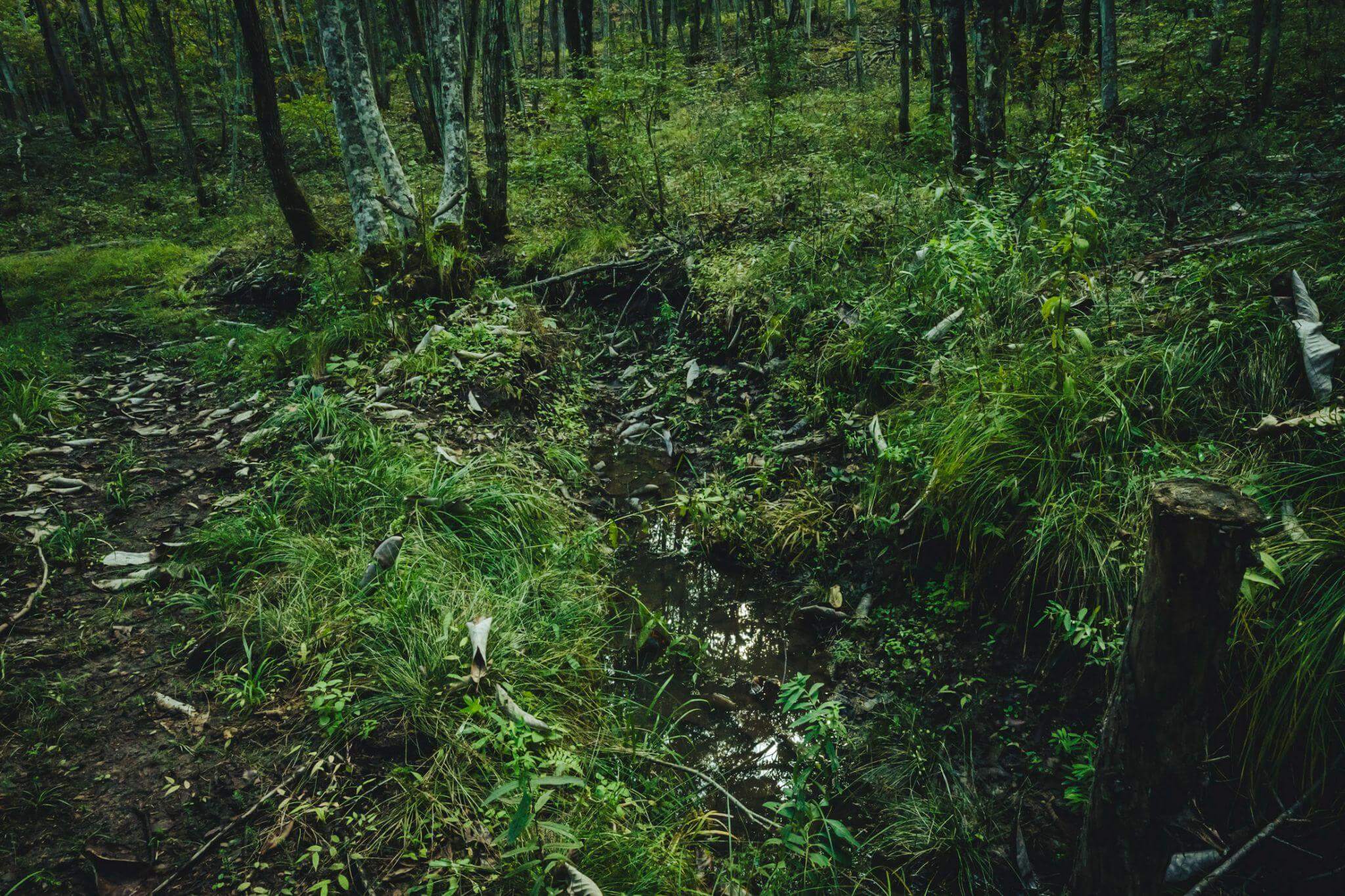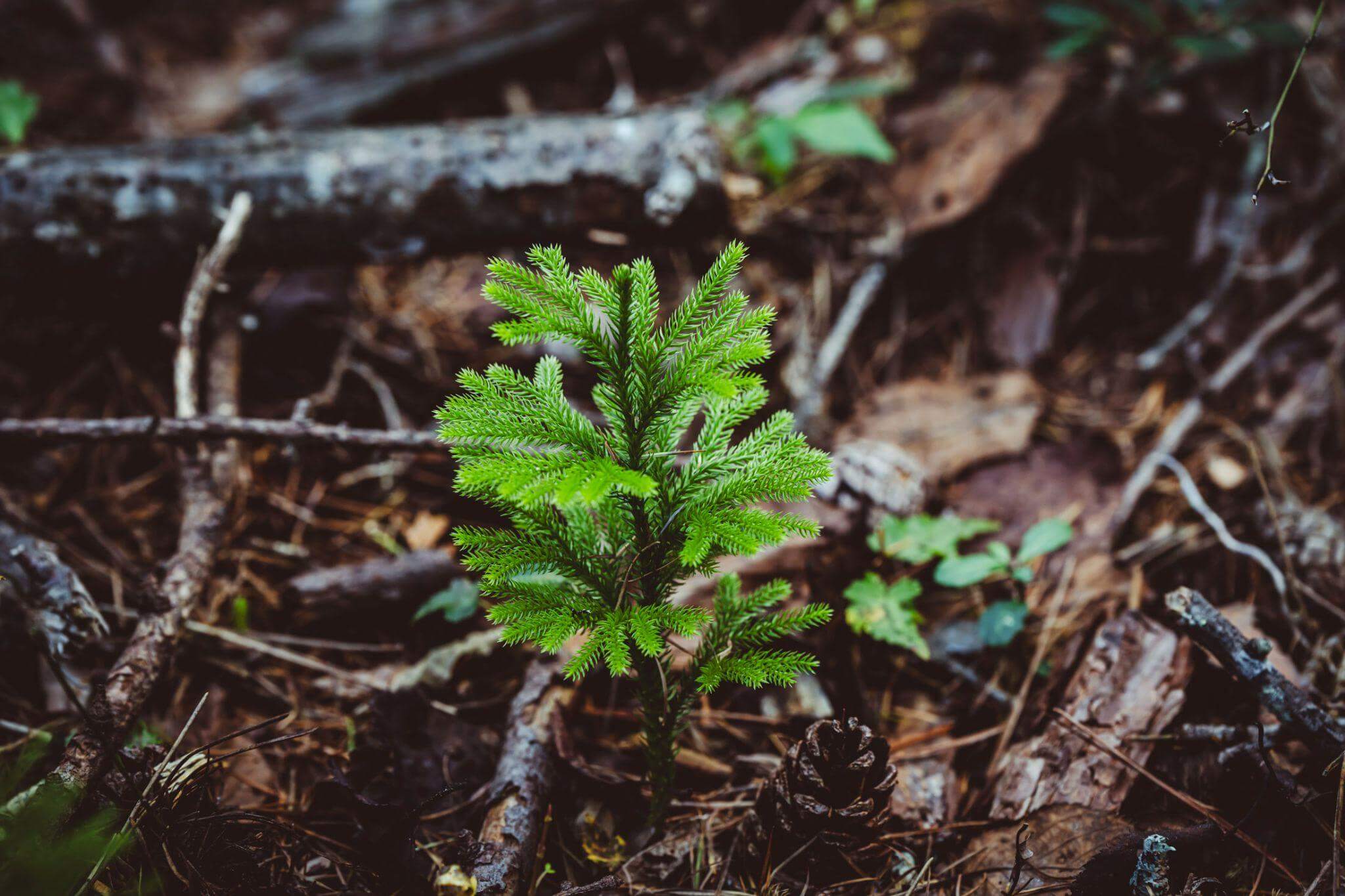"Omachi's Diverse Nature inspires the Rich Cuisine"
"Omachi's Diverse Nature inspires the Rich Cuisine"
To protect the fish that can only survive in the cold mountain water.
To protect the fish that can only survive in the cold mountain water.
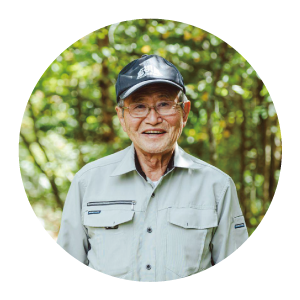
Mr. Masahiko Nagasawa
Chairman of the Hokuan Chubu Fisheries Cooperative Union


The Takase River flows through the city of Omachi, collecting water from mountains such as Yariga-take, Sugoroku-dake, Mitsumatarenge-dake, and Noguchigoro-dake. In the gorge, the reservoirs of Takase Dam, Nanakura Dam, and Omachi Dam shimmer with an emerald green surface.
"Before the dams were built, the Takase River was a wild river prone to flooding. During heavy rains, large stones would roll down, and you could see sparks flying even in the rain," says Mr. Nagasawa, the chairman of the Hokuan Chubu Fisheries union.
After the flood disaster known as "44-sai (44-Disaster)" in 1969 (*Showa 44), dam construction became urgent. The last dam, Omachi Dam, was completed in 1985 (Showa 60), and the fisheries union building was established below the dam. From this base, union members work on river conservation and fish release projects, cultivating iwana (char) in the on-site hatchery.
*Japanese emperor year
"In the past, when it came to festivals, koi fish (carp) and river fish were often consumed," says Mr. Nagasawa. The fisheries union has adapted to the times by also cultivating nijimasu (rainbow trout), but currently, iwana is the main focus. They bring fingerlings from the Oide Hatchery near the Miya-no-Mori Nature Park, nurture them until they reach a size suitable for natural reproduction, and then release them into the river."
"What we oversee are the Takase River and its tributaries, Kago River, Kashima River, Chi River, and the Nougu River flowing from Lake Kizaki. Except for the Nougu River, these rivers are so cold that if you put juice or beer in for just one minute, it would become chilled, even in midsummer."
The area under the fisheries union’s jurisdiction is a haven for cold-water fish like iwana, making it a popular place for mountain stream fishing enthusiasts.
"The concern is that the snowfield beneath the northern peak of Kashima Yarigatake has been melting early in the past couple of years. Due to the impact of climate change, the river's water level has decreased, leaving areas that were once flowing with no water. The temperature has also risen, making it difficult to catch fish in places where it used to be possible."
"In the past, when it came to festivals, koi fish (carp) and river fish were often consumed," says Mr. Nagasawa. The fisheries union has adapted to the times by also cultivating nijimasu (rainbow trout), but currently, iwana is the main focus. They bring fingerlings from the Oide Hatchery near the Miya-no-Mori Nature Park, nurture them until they reach a size suitable for natural reproduction, and then release them into the river."
"What we oversee are the Takase River and its tributaries, Kago River, Kashima River, Chi River, and the Nougu River flowing from Lake Kizaki. Except for the Nougu River, these rivers are so cold that if you put juice or beer in for just one minute, it would become chilled, even in midsummer."
The area under the fisheries union’s jurisdiction is a haven for cold-water fish like iwana, making it a popular place for mountain stream fishing enthusiasts.
"The concern is that the snowfield beneath the northern peak of Kashima Yarigatake has been melting early in the past couple of years. Due to the impact of climate change, the river's water level has decreased, leaving areas that were once flowing with no water. The temperature has also risen, making it difficult to catch fish in places where it used to be possible."
In an effort to raise awareness about the susceptibility of Iwana to natural influences, the Fishery Center incorporates the 'Komi-daira Fishing Pond Center,' open not only to union members but also to the general public.
"Iwana can be challenging to catch, so we also have Nijimasu (Rainbow Trout) ponds. Families come and enjoy barbecues as well. It would be wonderful if this gives an opportunity for people to experience activities such as filleting fish and starting a fire."
While concerns about the impact of global warming persist, there's an interesting phenomenon in rivers where the elusive fish known as 'Kajika' is increasing through natural reproduction.
“Kajika may not look the prettiest at first glance, but they actually have cute faces. If you turn over big stones at the bottom of the river, you'll find plenty of them. There's also a rich variety of aquatic insects. If you're interested in fishing, bring a fine mesh net for bait collecting. Just be aware, our rivers are quite cold."
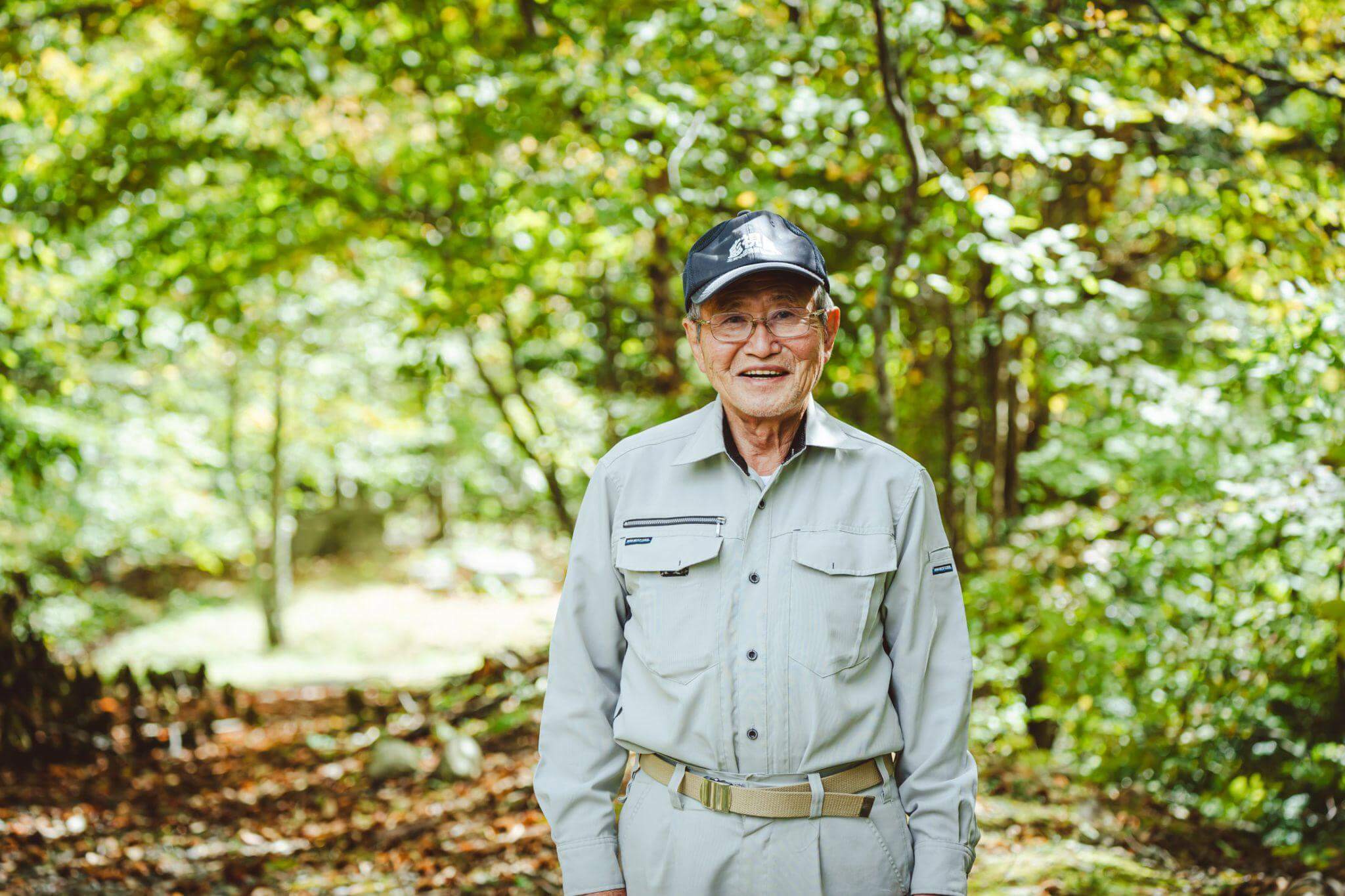
Born and raised on the shores of Lake Kizaki, Mr. Nagasawa shares, "I climbed the mountains within sight by the time I was in high school." Even now, during fish releases, he carries Iwana on his back as he ventures into the mountains. Despite approaching 80, his agility is far from what one might expect.
the Hokuan-Chubu Fisheries union office are as follows:
Address 2763 Omachi, Omachi City, Nagano Prefecture
Phone 0261-22-7107(weekdays, mornings only)
Fees Fishing permits cost 1,000 yen (an additional 500 yen for on-site tickets). Admission is free for junior high school students and younger, as well as persons with disabilities. Tickets are available for purchase at fishing ponds, the fisheries union office, convenience stores, and other locations.
Kowomi-daira Fishing Pond Center
Address 2112 Taira-Takaseiri, Omachi City, Nagano Prefecture
Phone 0261-22-8624
Open 9:30 AM to 4:30 PM
Open only on Saturdays, Sundays, and public holidays from mid-April to the end of September. Continuous operation during the Golden Week holidays in May and around the Obon holiday.
(Information accurate as of the end of December 2023)

Born and raised on the shores of Lake Kizaki, Mr. Nagasawa shares, "I climbed the mountains within sight by the time I was in high school." Even now, during fish releases, he carries Iwana on his back as he ventures into the mountains. Despite approaching 80, his agility is far from what one might expect.
the Hokuan-Chubu Fisheries union office are as follows:
Address 2763 Omachi, Omachi City, Nagano Prefecture
Phone 0261-22-7107 (weekdays, mornings only)
Fees Fishing tickets are 1,000 yen (plus 500 yen for field tickets);
free for junior high school students and younger and the physically disabled. Sold at fishing ponds, fishermen's cooperative offices, convenience stores, etc.
Kowomi-daira Fishing Pond Center
Address 2112 Taira-Takaseiri, Omachi city, Nagano Prefecture
Phone 0261-22-8624
Business Hours 9:30 AM to 4:30 PM
Open only on Saturdays, Sundays, and public holidays from mid-April to the end of September. Continuous operation during the Golden Week holidays in May and around the Obon holiday.
(Both text and data as of December 31, 2023)
The healthy forest that stores water owes its existence to mountain work.
The healthy forest that stores water owes its existence to mountain work.

Mr. Taku Hashimoto
Representative Director of the Corporate Union 'Yama Shigoto Sozo Sha'


Yama Shigoto Sozo Sha (Direct translation : Mountain Work Creation Company) was established in 2020 by three individuals who came from the city. Captivated by the nature of Omachi, they decided to make mountain work their livelihood, gathered like-minded individuals, and formed a corporate union.
They are dedicated to the maintenance of neglected satoyama and sustainable timber production for the future. Their joy lies in the regeneration of the mountains, earning them the trust of the local community.
The privately-owned forests in the Daihoku region, including Omachi City, have small individual ownership areas, with the majority being less than 1 hectare per landowner.
The Yama Shigoto Sozo Sha undertakes the maintenance of these forests based on requests from individual landowners. Their goal is to enhance the value of the mountains not only as productive forests (producing wood, firewood, mushrooms, etc.) but also by recognizing the various other values that forests possess.
Today, most of the 30 employees are migrants from outside the prefecture, including Mr. Taku Hashimoto. After working on the field for about 15 years, he took over as the representative four years ago.
"The forest that we are currently thinning was planted during the post-war afforestation period. In many cases, cedar is planted in moist areas, and larch is planted in dry areas. However, since Omachi is not suitable for specific tree species, various trees are planted by different landowners."
"That's the charm of Omachi's mountains," says Mr. Hashimoto. "You can find more than 10 types of mushrooms in a day of walking through the forest. There are so many different tree species, and various organisms like fungi, insects, birds, and animals can inhabit the area."
Forests rich in biodiversity are attractive to deer as well...
"People who come for inspections from outside the prefecture are surprised to see the ground covered in green. Unfortunately, even in Omachi, the deer population is increasing. Since deer consume the vegetation in the lower levels, our efforts are being undone."
With a sense of urgency, they have started incorporating hunting as part of their mountain work from this winter. How to eat the deer and contemplating game meat dishes is also on their agenda.
Enriching vegetation not only enhances biodiversity but is also effective for disaster prevention.
"Without low-level vegetation, heavy rainfall can lead to surface soil erosion and disasters such as landslides. The forest floor acts like a sponge, absorbing a significant amount of water, which then becomes groundwater and springs. This function of water source conservation is crucial"
At the end of the interview, Mr. Hashimoto guided us to the rice fields just below the forest in the midst of thinningThe vibrant autumn colors adorn the beautiful forest, farming the harvested rice paddies.
"I really like this view. The water stored by the forest springs up and is used in the rice fields and farms. It beautifully illustrates the relationship between water, forest, agriculture, and food," says Mr. Hashimoto.
"Satoyama forests come alive when tended to and utilized repeatedly. The environment of a well-maintained forest improves over time"
If everyone can easily embrace the forest and coexist with it, both the forest and people can flourish more." This thought left us with a hopeful vision for the future of the relationship between the people and the forests in Omachi.

Originally from Fukushima Prefecture, Mr.Hashimoto shifted the base of his music career from Tokyo to Nagano, where he encountered forestry. Even now, alongside his mountain endeavors, he continues his musical pursuits under the name "somaf no oto", which translates to "Sound of somaf."
Corporate Union 'Yama Shigoto Sozo Sha'
Address Tsukuda Building 3rd Floor, Omachi 3300-1, Omachi City, Nagano Prefecture
Phone 0261-85-0940
(Information as of December 2023)

Originally from Fukushima Prefecture, Mr.Hashimoto shifted the base of his music career from Tokyo to Nagano, where he encountered forestry. Even now, alongside his mountain endeavors, he continues his musical pursuits under the name "somaf no oto", which translates to "Sound of somaf."
Corporate Union 'Yama Shigoto Sozo Sha'
Address Tsukuda Building 3rd Floor, Omachi 3300-1, Omachi City, Nagano Prefecture
Phone 0261-85-0940
(Both text and data as of December 31, 2023)
\Click here for tour details and application/
Click here for tour details and application


